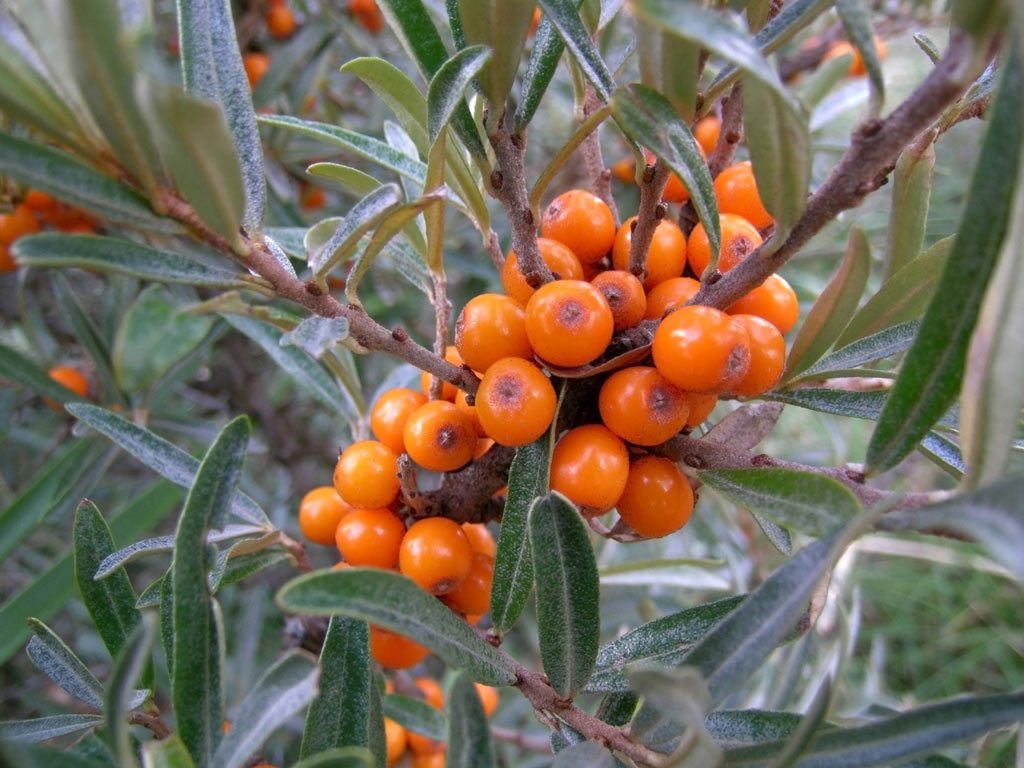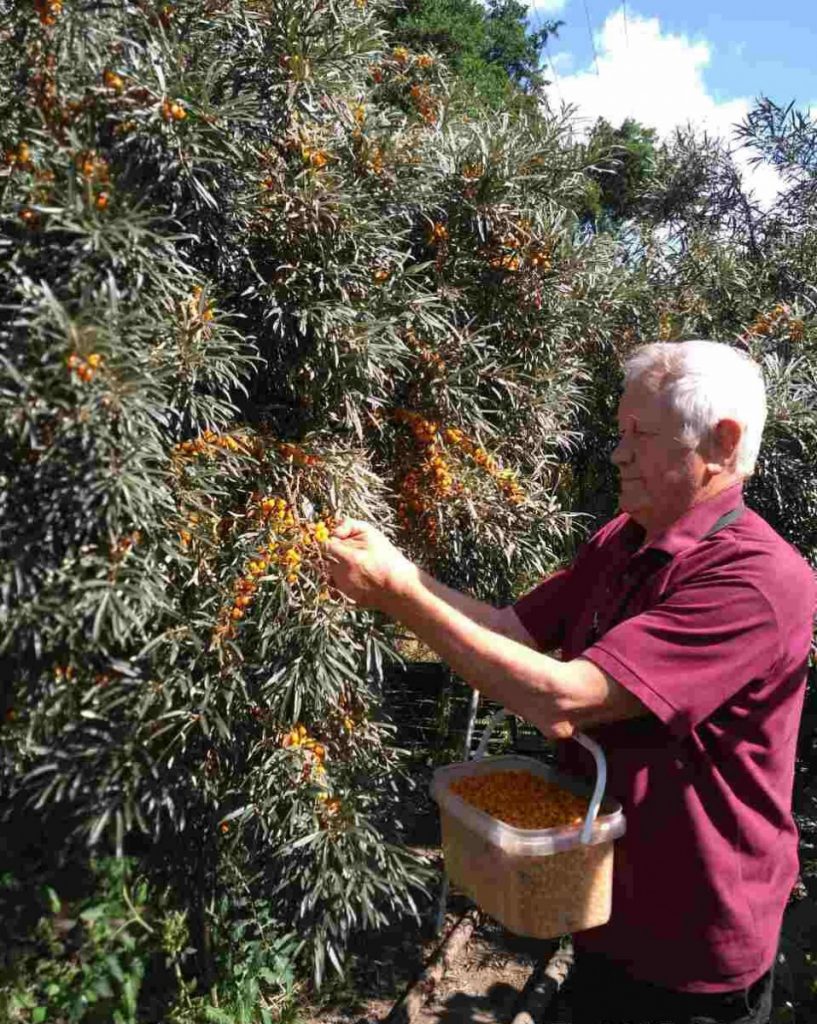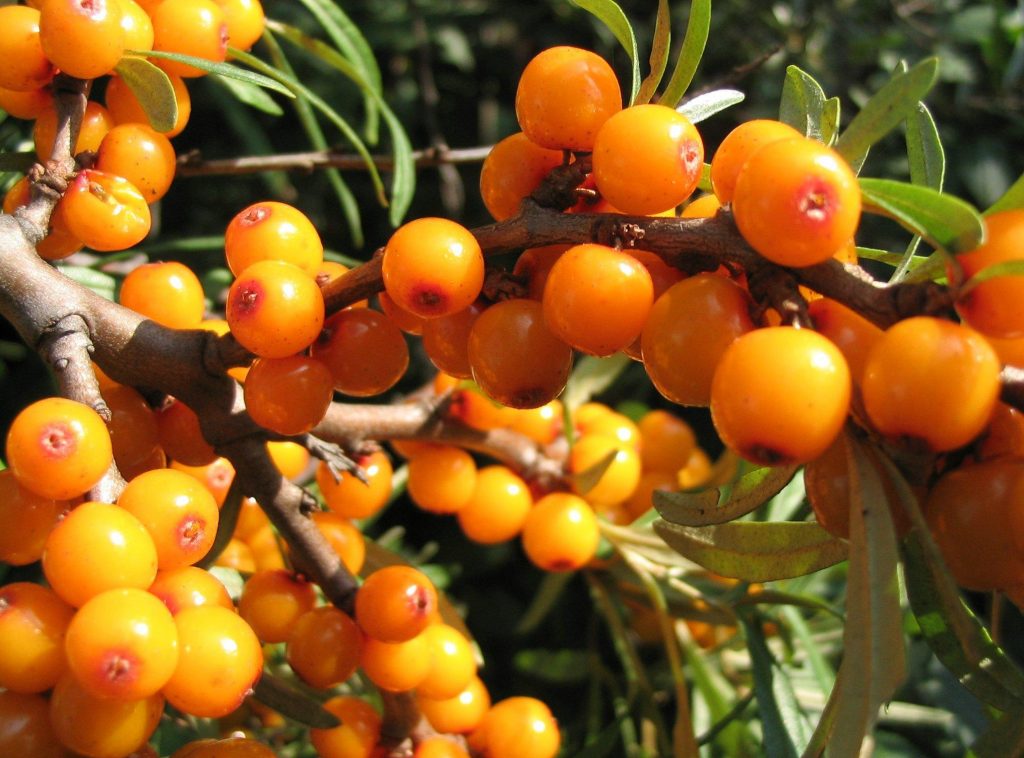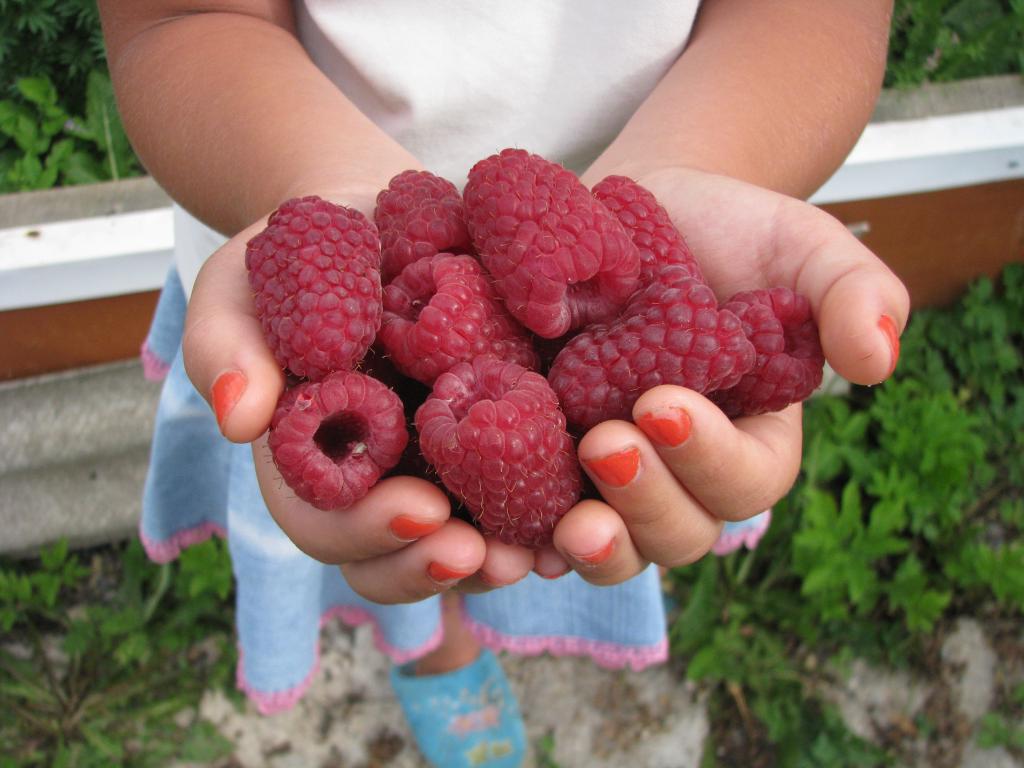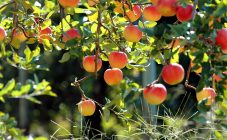Content:
Sea buckthorn is a tree with medicinal properties. It is considered to be as excellent a honey plant as linden. The ancient Greeks used its branches to heal horses. In a plant, all its parts can be used as a medicine: berries, bark, branch and roots. The beneficial properties of sea buckthorn make it possible to use it in cosmetology.
Sea buckthorn - bush or tree
If we talk about whether sea buckthorn is a tree or shrub, what sea buckthorn is, you should immediately dot all the i's: sea buckthorn is a shrub tree. Its height depends on the conditions in which it grows (from 5 to 15 m). Thanks to this, the plant is used as a hedge.
What does sea buckthorn look like? The wood is covered with a light brown skin. The most attractive in its appearance is the green leaves: long and narrow, located close to each other on the branches. In the spring, nondescript female or male flowers appear on the tree. Plants are also found either female or male. The difference between them is that fruits develop on female plants, and male plants perform the function of pollinators. Each branch ends with small thorns that hang down smoothly.
Sea buckthorn fruits surround the entire branch. It is impossible to say with certainty when the sea buckthorn ripens. Sea buckthorn berries ripen from early August to late autumn. They are small (0.3 - 0.6 g), round in shape. In the middle of the fruit is a small bone. The peel on the berries is oily. The ripe fruit has a sweet and sour taste with a barely noticeable bitterness.
The description says that the chemical composition of sea buckthorn is quite varied and determines the value of the berries. It includes components such as ascorbic acid, B vitamins, vitamin A, folic acid, iron, magnesium, silicon, boron, sulfur. Sea buckthorn oil is made from the seeds.
Sea buckthorn: medicinal properties and contraindications
The oil can be used to heal burns, decaying wounds, eczema, lichen. The use of berry extract can also be useful in the treatment of gastric or duodenal ulcers. The benefits of sea buckthorn oil are noted for severe ear pains, runny nose and sore throat.
In addition to useful qualities, it also has some negative properties. For example, when diagnosing pancreatitis, hepatitis, acute cholecystitis, the use of sea buckthorn should be minimized or completely excluded.
People suffering from urolithiasis are also not recommended to eat fresh berries. Otherwise, the possibility of an increase in acidity in the urine is not excluded.
Sea buckthorn family suckers: growing and care
There are several possible options for breeding a culture. Among them are the following:
- Seminal. You can sow seeds in spring or fall. They are pretreated with a growth stimulant. Experienced gardeners rarely use this method, since there is no way to know in advance what gender the plant will be after germination of the seed. This will become known only after 2 - 3 years.
- Root shoots.After 10 years, the plant will have a well-formed root system. A large number of young growth appears on the site. It is used for reproduction.
- Layers. Layers of sea buckthorn are bent to the ground and covered with a thin layer of soil. After 3 to 4 weeks, the growth will give a root.
- Grafting. The cuttings are grafted onto the rootstocks, the age of which has reached 2 - 3 years.
Sea buckthorn does not tolerate a transplant, so it must be immediately planted in a permanent place. For this, a sunny area is suitable, in which the acidity of the soil is neutral.
In order for the seedling to take root quickly, experienced gardeners recommend adding humus and superphosphate to the planting pit. During the autumn digging of the site for sea buckthorn, you can apply mineral fertilizers and wood ash.
The dimensions of the planting pit can be within 50 X 100 cm. A wooden peg is driven into its center, the height of which is within 70 - 100 cm. It will serve as a support for the trunk. The roots of the seedling are gently straightened and gradually covered with earth. After planting, the bush is watered with 2 - 3 buckets of water. The near-stem circle is mulched. Thanks to this, it will be possible to maintain soil moisture for several days.
It is recommended to start pruning with the onset of spring. During the first 5 years, the crown is thinned: shoots that have grown incorrectly are removed. For older trees, rejuvenating and sanitary pruning is performed: young, damaged and dry branches are removed.
The tree does not tolerate drought and waterlogging, which will lead to the development of small leaves that can change their color, and the yield will decrease.
In the season of growing leaves and ripening berries, the frequency of watering should be increased.
A sea buckthorn bush or tree needs periodic loosening of the near-stem soil. As a result of this procedure, a good supply of air to the roots is ensured, and also improves drainage.
Weeds take nutrients from the soil that are necessary for the growth of sea buckthorn. In order to avoid their lack, it is recommended to destroy them as necessary.
Popular varieties
Several hundred varieties of sea buckthorn have been bred by breeders. Among the most famous are:
- The Moscow beauty is characterized by a high yield level. From one bush, you can get up to 16 kg of berries, which ripen in early autumn.
- A golden ear. The fruiting period begins after 3 years. There are practically no thorns on the branches. The advantage is that the variety has excellent winter hardiness. This allows you to grow the Golden Ear even in the Urals. The fruits will ripen at the end of summer.
- Golden Siberia. The main characteristics of this variety are high yield (up to 21 kg of fruits per plant) and frost resistance. This thorny shrub can grow in the Krasnodar Territory, Crimea, as well as in the Leningrad Region, where winters are harsh or with little snow. The berries are fully ripe in early autumn.
- Crusiniform. There are no thorns on the branches of the bush. Fruit weight reaches 10 g. They ripen by the end of summer. The peculiarity of the variety is its drought and frost resistance.
- Nizhny Novgorod beauty. The variety was recently bred. The berries can ripen in the middle of summer.
Each of them has its own characteristics that must be taken into account when growing.
Sea buckthorn pests and control
Despite the fact that sea buckthorn is famous for its high immunity to infection by diseases and pests, the possibility of its disease is not excluded. Endomycosis ranks first among the most common. The disease provokes a fungus, which is carried by wind or insects. The disease affects the fruits: the berries lose color and become soft. During winter, spores of the fungus hibernate in the bark of a bush or in fallen berries, and in the spring they begin to infect young fruits.To combat the disease, the bush after flowering is recommended to be sprayed with 0.5% copper oxychloride.
As for pests, they "love" sea buckthorn:
- Sea buckthorn fly. If the bush is affected by this insect, the possibility of losing 85% of the crop is not excluded. Flies begin to fly out after wintering in early summer. The female lays eggs under the skin of the fruit. When a bush is damaged by a pest, the berries become stained, and then darken and fall off. For prevention, spraying the bush with chlorophos in early summer helps.
- Sea buckthorn moth. The insect looks like a house moth. It hatches from pupae, into which caterpillars turn. These, in turn, damage the green parts of the bush, leading to their drying out. To destroy caterpillars, the tree is sprayed with entobacterin or chlorophos.
- Pearl oyster. Insect larvae suck juice from young buds and leaves. As a result, the leaves curl and fall off. To destroy the larvae, the bush must be treated with karbofos.
With simple care, timely watering and disease prevention, one bush will give the gardener an excellent harvest of healing and useful berries.

